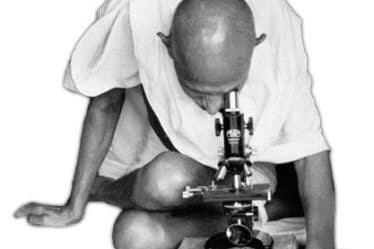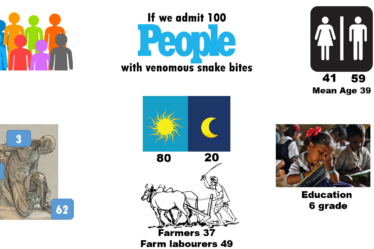Bombay, 1975.
The air was salty, the streets bustling, and a young doctor stood quietly outside the gates of St. George’s Hospital. Fresh out of internship at MGIMS, Sevagram, he had no roadmap for his future.
Sevagram did not offer postgraduate training—its founder Dr. Sushila Nayar wanted her students to serve in villages. But government jobs were scarce, and this young doctor, like many others from Sevagram, had migrated westward, seeking opportunity in Bombay.
He applied for a medical officer post at St. George’s Hospital, affiliated with the venerable Grant Medical College. The hospital, a colonial relic with crumbling walls and crowded wards, was his new battleground. On his first day, he was posted to the OPD. The ink on his MBBS certificate was barely dry.
Barely an hour had passed when a frail young man was wheeled in. A shipyard worker from the United States, the patient had fallen dangerously ill while working abroad. Physicians in America had struggled to diagnose him for weeks. Fearing he would die on foreign soil, he insisted on returning to his homeland. He arrived barely conscious, emaciated, and febrile.
The young doctor greeted the case with calm curiosity. He pulled up a chair, sat at eye level, and began to probe—not with scans or tests, but with questions.
Six weeks of persistent fever. Headache. Neck stiffness.
The pattern was familiar. Memories of Sevagram flashed before him: Dr. S.P. Nigam’s wards, OP Gupta’s grand rounds, A.P. Jain’s teachings on tubercular meningitis. The presentation echoed those lessons.
“I think this is tubercular meningitis,” he murmured.
He asked for a lumbar puncture tray. The OPD nurse—also on her first day—looked helpless. She had never assisted in one. Unfazed, the young doctor scrubbed up, found the landmarks, and performed the procedure himself. The CSF that emerged was cloudy and cobwebbed—a classic sign. He ran to the side lab, slid a drop under the microscope, and found lymphocytes crowding the field. The ESR was markedly elevated.
He wasted no time. The diagnosis was clear. Before any consultant arrived, he had already admitted the patient and started empirical anti-tubercular therapy and corticosteroids.
An hour later, the senior physician walked in. He listened, incredulous, as the staff recounted the morning’s events: a patient from the U.S., desperately ill; a fresh MBBS graduate who took a meticulous history, performed a lumbar puncture, interpreted the findings, and initiated treatment—all in under an hour.
The next day, in the Department of Medicine’s general meeting, where physicians from across Bombay gathered, the young doctor was asked to narrate the case. He stood behind the lectern, modest yet confident, and described how clinical acumen, sharpened in Sevagram’s humble wards, had made the diagnosis.
When he finished, the room stood up in applause.
That young man was 𝗗𝗿. 𝗩𝗶𝗷𝗮𝘆 𝗞𝘂𝗺𝗮𝗿 𝗚𝗲𝗱𝗮𝗺.
This Saturday, Dr. Vijay Gedam will celebrate his 75th birthday. In the mid-seventies, he went on to earn his MD in Medicine from Grant, served as Civil Surgeon, retired as deputy director and remained deeply grateful to the training he received at MGIMS.
“We were lucky,” he told me. “There were no scans, no PCRs. We had to trust our hands, our ears, and our judgment. I saw many TB meningitis cases in Sevagram. That patient in Bombay—it was like déjà vu.”
He smiled, recalling those formative years under the tutelage of Sevagram’s greats. “You learn once. But you remember forever.”
And that day in Bombay, when clinical reasoning trumped technology, proved just that.

